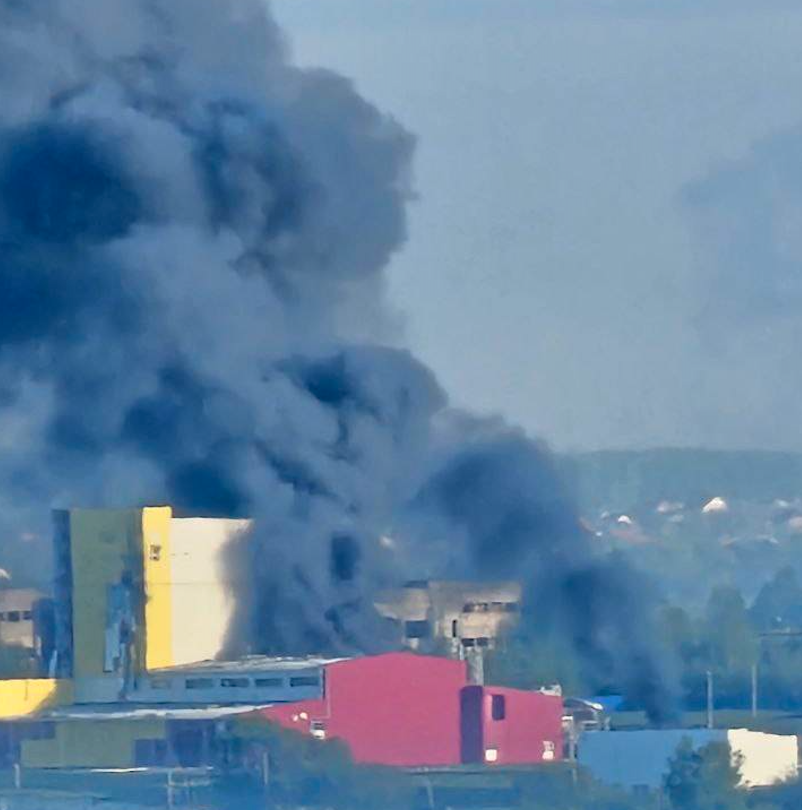Ukraine slams military targets all over Russia Amid Moscow’s Defense Gaps

With Russia having redeployed most of the country’s air defense systems for Moscow’s big May 9th propaganda festival, Ukraine launched an overnight series of precision strikes on military facilities, factories, and airfields across the country.
The coordinated attacks, executed with long-range kamikaze drones and possibly missiles, targeted the core of Russia’s war machine, exploiting vulnerabilities left by the Kremlin’s redeployment of air defense systems to Moscow for Vladimir Putin’s May 9th propaganda festival. Satellite data from NASA’s Fire Information for Resource Management System (FIRMS) confirmed fires at several strike sites, highlighting the operation’s success.

Ukrainian forces hit critical targets, including the Kubinka military airfield in the Moscow region, a key base for Russian air operations. The airfield, which supports Russia’s airstrikes on Ukrainian cities, was engulfed in flames, with social media posts reporting explosions and thick smoke, suggesting secondary detonations of munitions. This strike undermines Russia’s ability to project air power, a central tool in its campaign to terrorize Ukrainian civilians. The redeployment of air defenses to Moscow for Putin’s Victory Day spectacle likely left Kubinka exposed, amplifying the attack’s impact.
In Russia’s Tula region, Ukraine targeted the Splav factory and Basalt plant, both vital to Russia’s military-industrial complex. The Splav facility produces rocket systems used to attack Ukrainian positions, while Basalt manufactures components for guided munitions. Reports of fires at these sites indicate successful strikes that likely disrupted production. These factories have long sustained Russia’s war effort, churning out weapons for its campaign of destruction. Their disruption deals a heavy blow to Moscow’s logistics.
Further strikes hit a fiber-optic cable manufacturing plant in Saransk and a multiple launch rocket system (MLRS) production facility, according to posts on X. These targets, essential for Russia’s battlefield communications and artillery, reflect Ukraine’s strategy of dismantling the infrastructure fueling Russia’s aggression. In the Vladimir region, the Murom Instrument-Making Plant, which produces ammunition ignition devices, was set ablaze, further crippling Russia’s resupply efforts. NASA FIRMS data detected thermal anomalies near several locations, confirming the strikes’ effectiveness.
The operation’s timing exploited Russia’s focus on protecting Moscow for Putin’s May 9th festivities, which glorify Soviet-era victories while masking the Kremlin’s failures in Ukraine. With air defenses concentrated around the capital, Ukraine’s long-range capabilities—honed through domestic drone and missile development since Russia’s 2022 invasion—faced reduced resistance. Unlike Russia’s indiscriminate attacks on Ukrainian civilians, Ukraine’s strikes targeted military assets, aiming to erode the Kremlin’s war-making capacity. President Volodymyr Zelenskyy praised the operation, stating, “Our forces are bringing justice to Russia’s doorstep, targeting the tools of their terror.”
Russia’s Defense Ministry claimed to have downed dozens of drones, but fires and explosions across multiple regions contradict Moscow’s narrative. The Kremlin’s silence on the damage suggests the strikes hit harder than it admits. As Ukraine capitalizes on Russia’s overstretched defenses, these attacks signal a turning point, proving the aggressor’s heartland is no longer safe.
With each operation, Ukraine edges closer to dismantling Russia’s ability to wage war.
Overnight and early this morning, Russia was hit by a massive drone attack: strikes targeted the fiber optics plant in Saransk and an MLRS production facility in Tula. There were also reported hits on the Kubinka airbase in the Moscow region. pic.twitter.com/X9JGtDhmo8
— NOELREPORTS 🇪🇺 🇺🇦 (@NOELreports) May 7, 2025